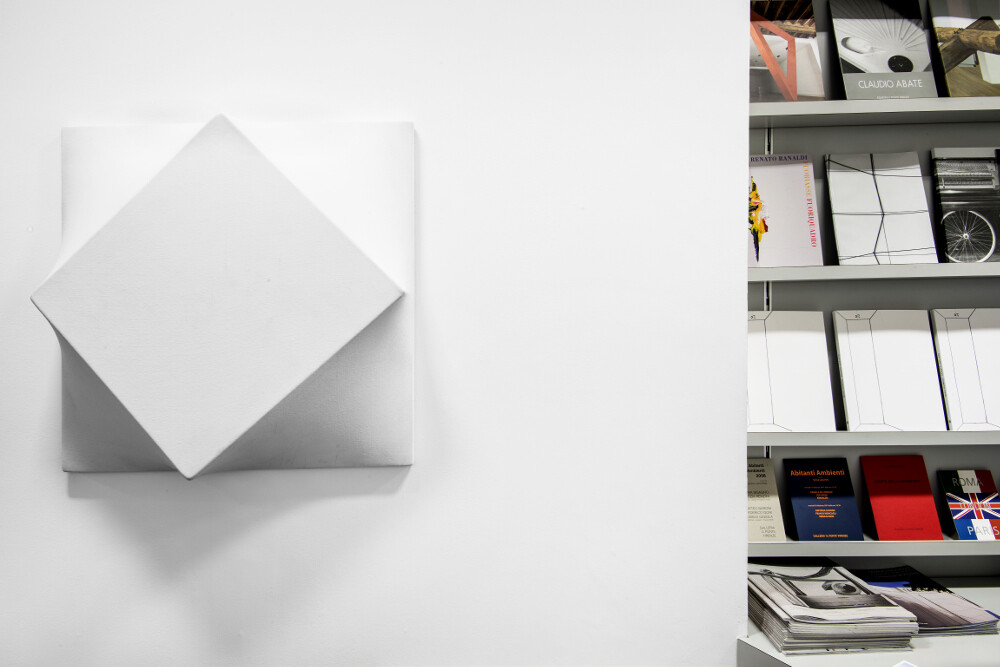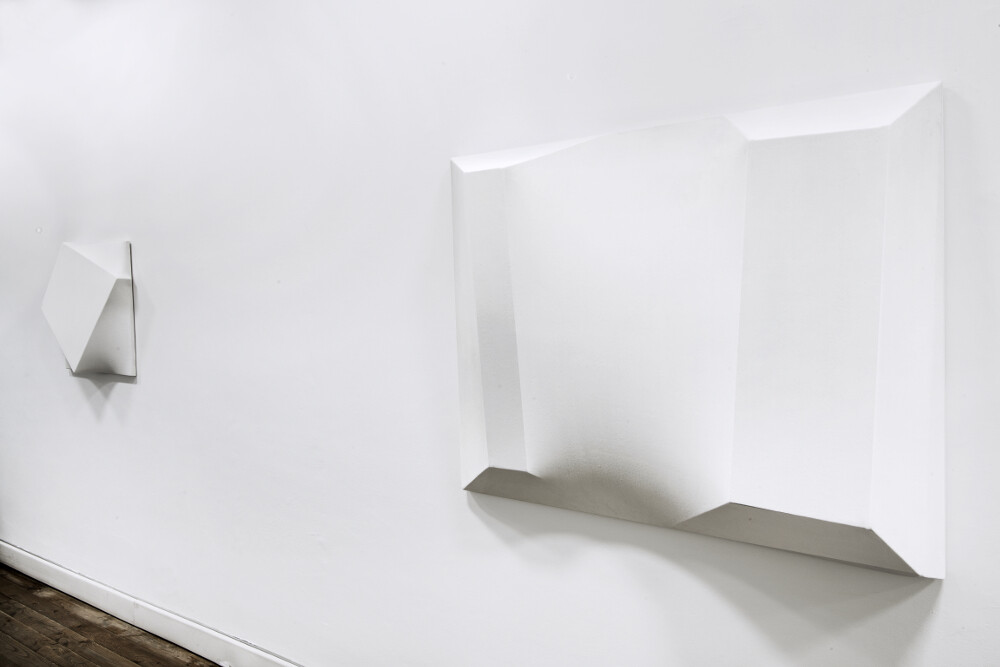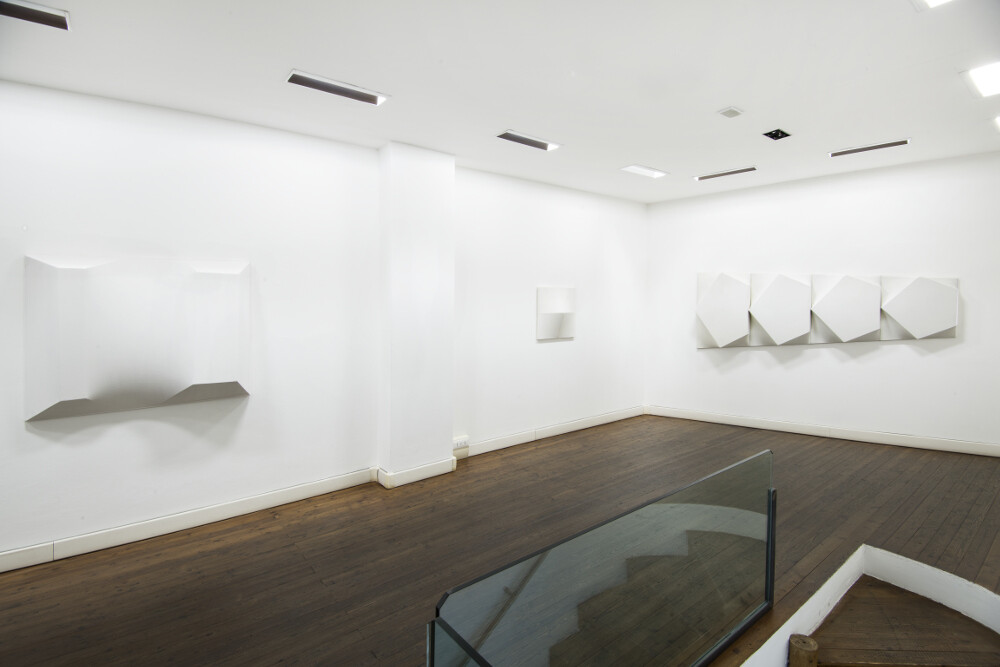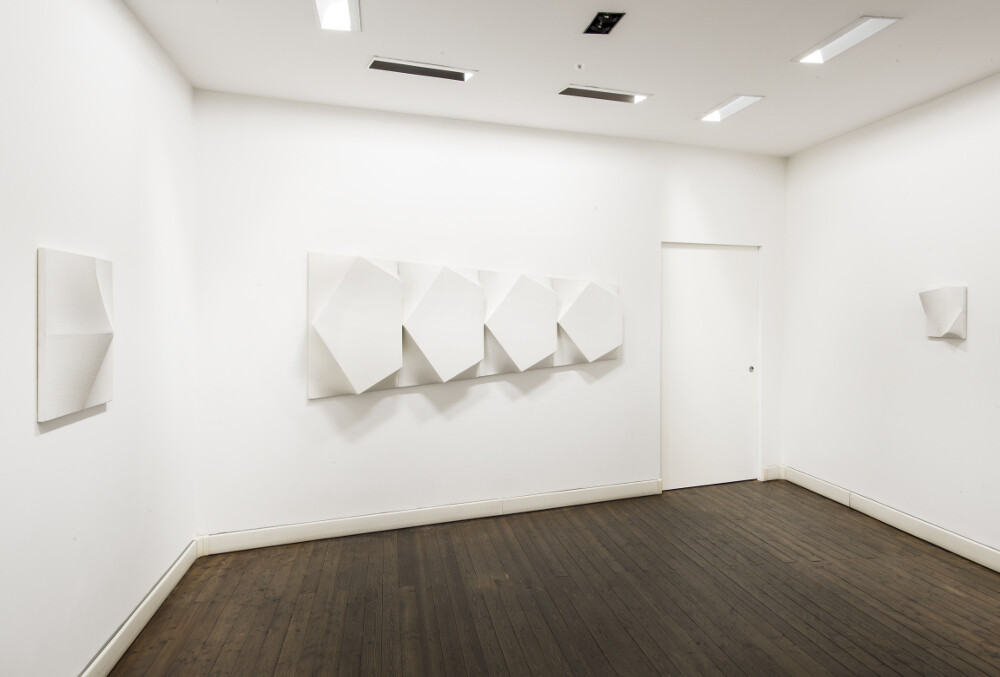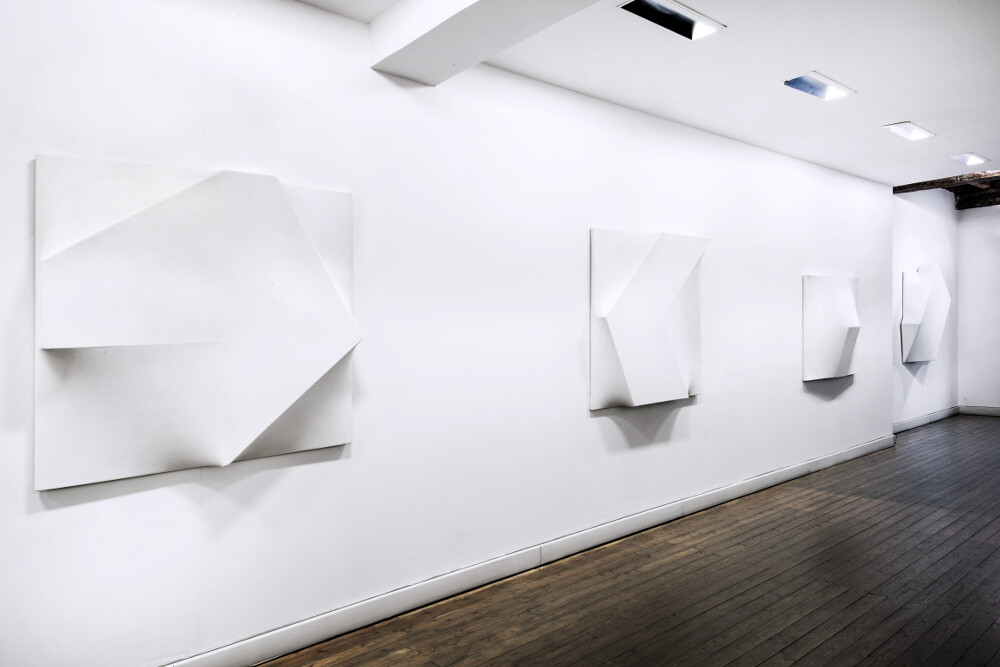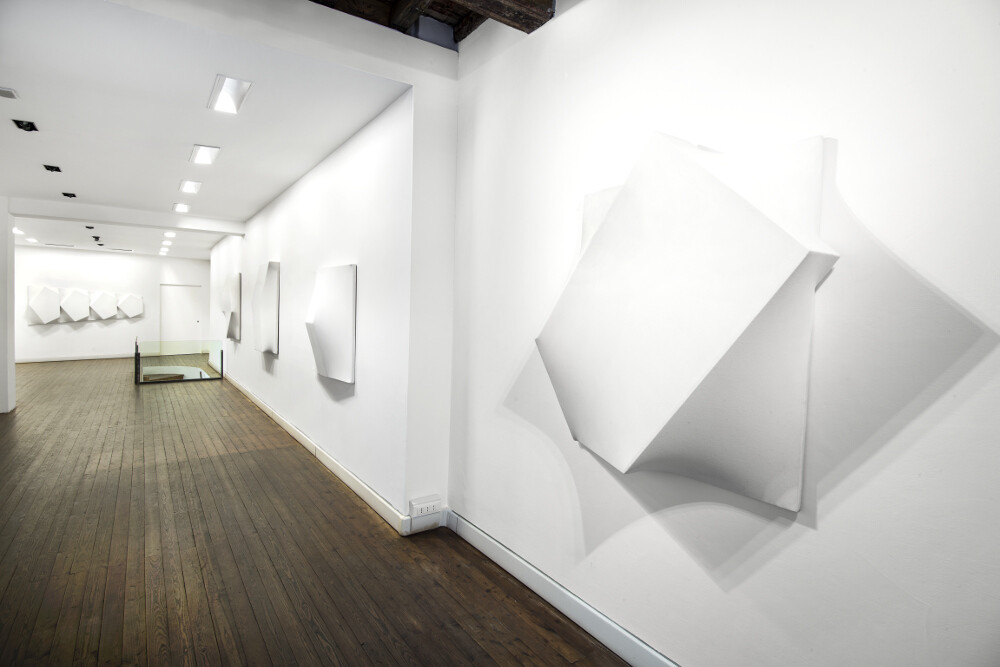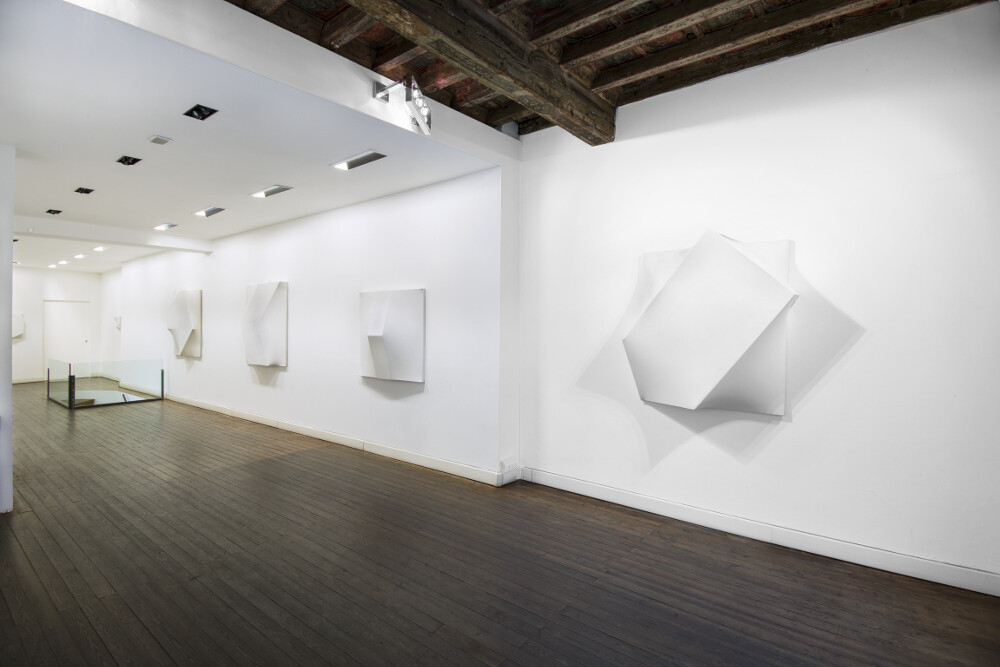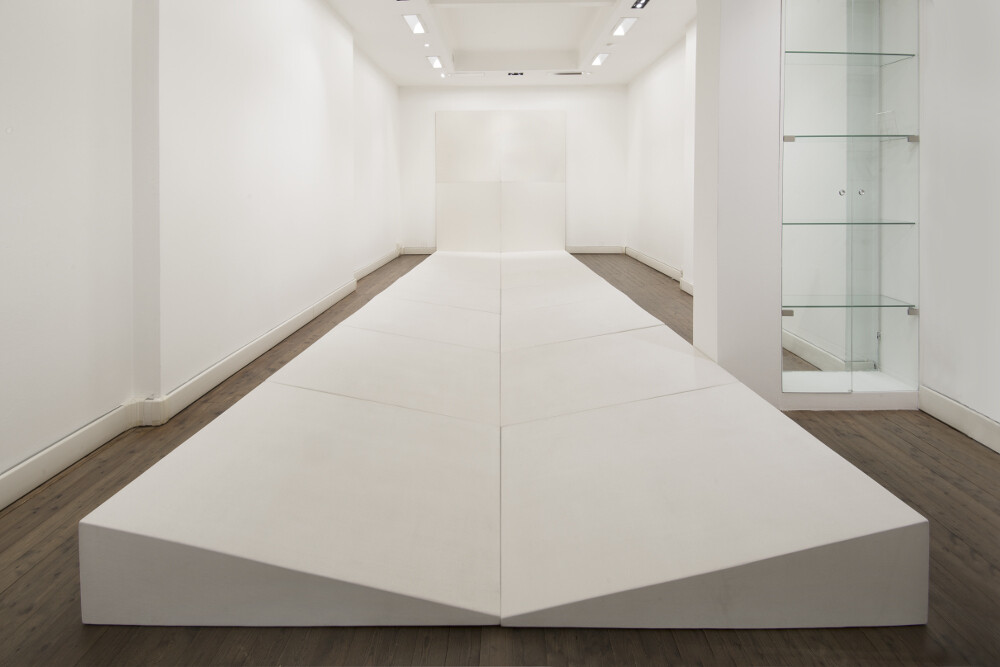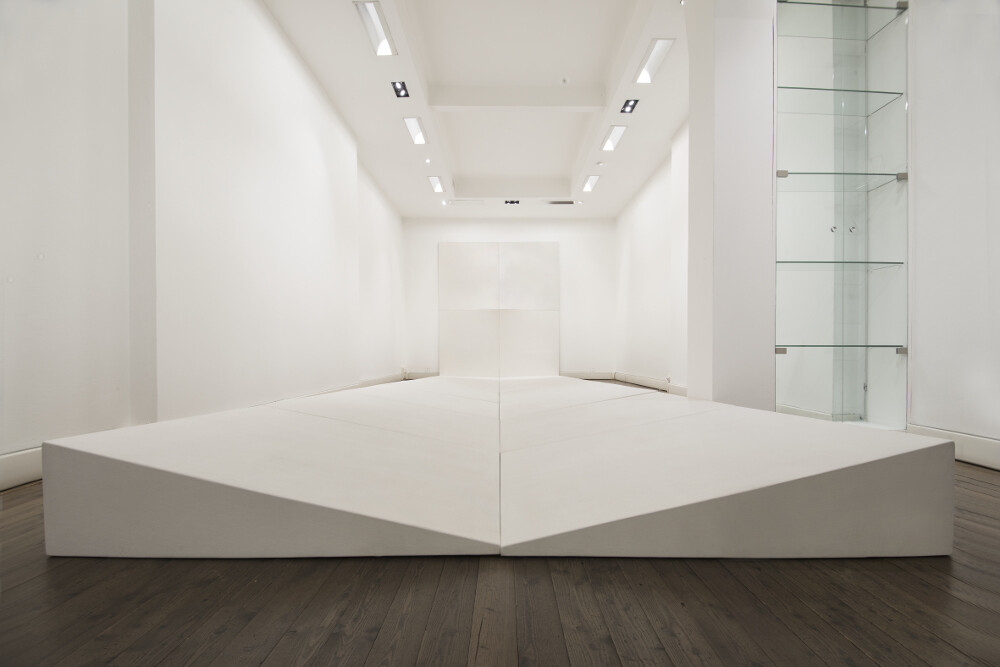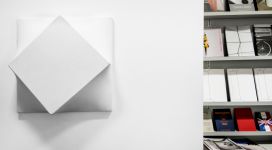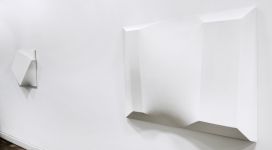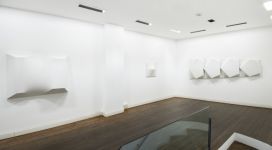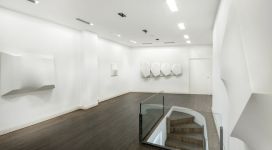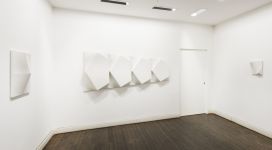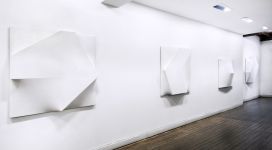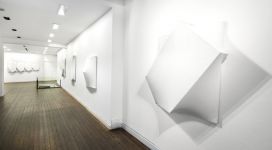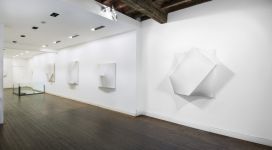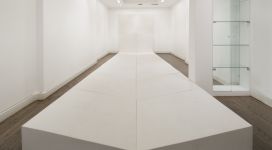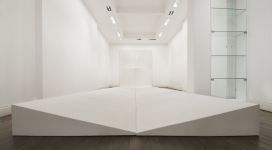| BRUNO GAMBONE | Biography | |
| Objects 1965-1970 | Close up 2007 | |
| curated by ANDREA ALIBRANDI | Catalog | |
| 9 may – 25 july 2014 |
Galleria presents an exhibition by Bruno Gambone, an artist with a certain renown as a ceramist, who, however, between the end of the 1950s and beginning of the 1960s devoted himself entirely to painting.
After moving to New York in 1963, through vivid and bright colours along the lines of a certain US Minimalism, his geometrical painting acquired a volume that emerged forcefully from the surface of the painting. Between 1966 and 1967, both through painted wooden structures and with the creation of geometrical volumes squashed against the wall and covered in canvas, this three-dimensionality took shape and gained greatly in significance. In 1967 at Galleria del Cenobio in Milan, where he would move the following year, upon the invitation of his friend Alviani he created an arrangement of canvases stretched over wooden structures, introduced by a text by Germano Celant. Then he continued along this line with works substantially with the characteristics of ‘object painting’, which Gillo Dorfles wrote of in 1967, bringing together Castellani, Bonalumi and Scheggi with Fontana in an exhibition in Rome at the Arco D’Alibert owned by Mara Coccia. To Bonalumi and Scheggi in particular, Gambone was joined by a brotherly friendship and shared intentions, and together they took part in numerous exhibitions and artistic-theatrical actions in that period.
This world of Bruno Gambone, despite being quoted in studies by other authors, we can say remained hidden for over forty years by his much better known activity as a ceramist, which he devoted himself to almost entirely following the death of his father Guido (ceramist between 1909 and 1969).
Comprising ten extroverted canvases as well as a large work, ARA (Altar, 1969) that takes up the whole lower floor of the gallery, this exhibition, accompanied by a full and detailed catalogue, tries to bring this set of works and their history back to light. Hence a gap is filled in the history of 1960s Italian art, a decade that was without doubt a magical moment in artistic creativity on the peninsula.
